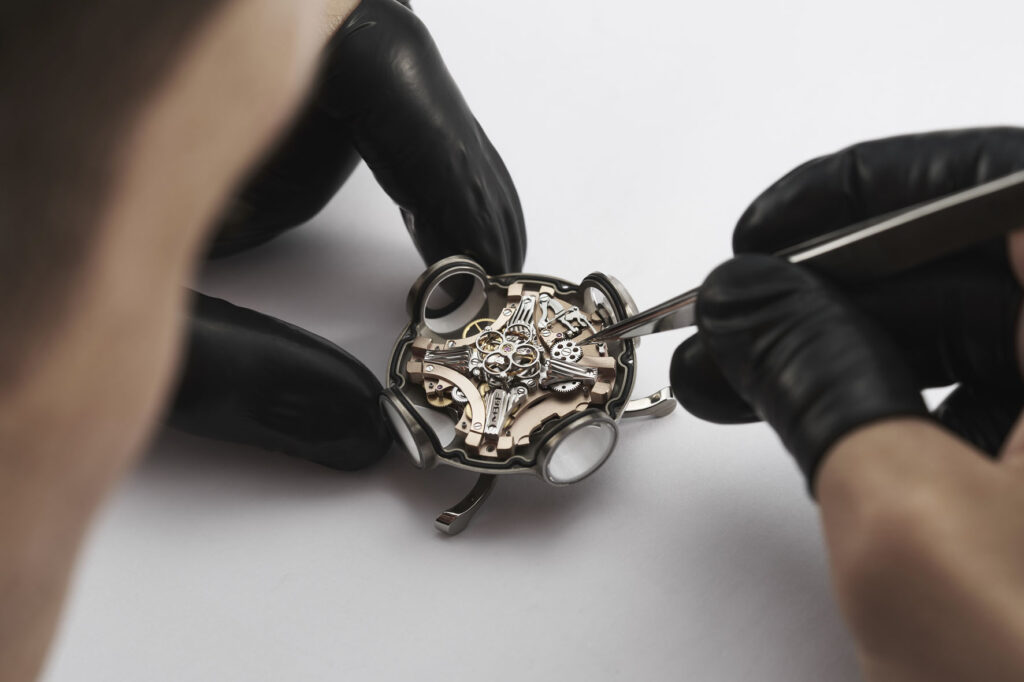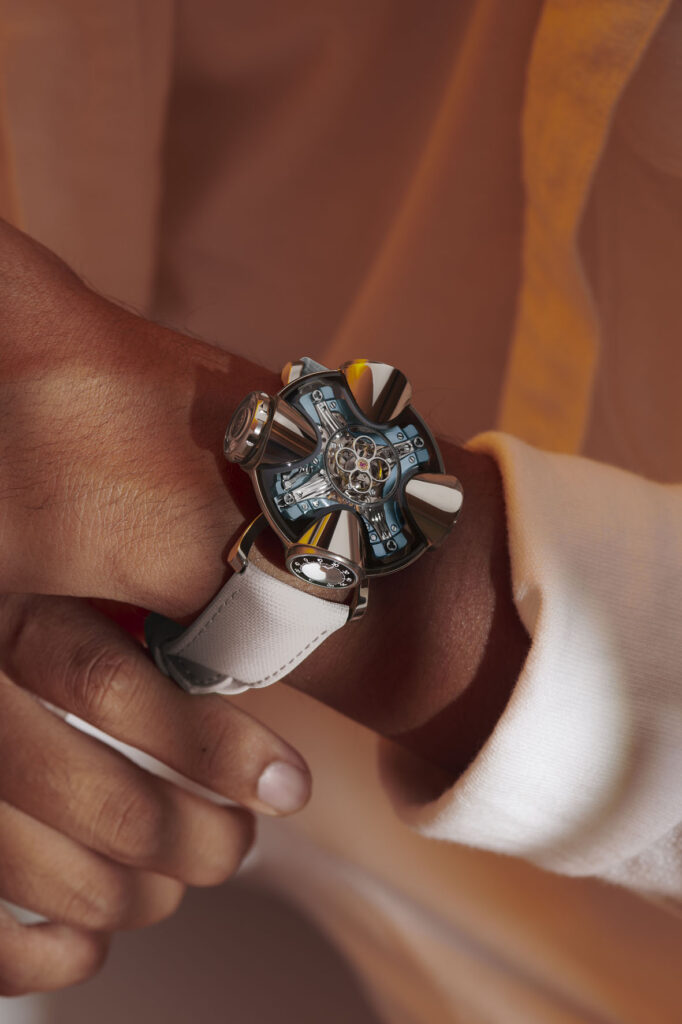MB&F: HM11 “Architect”
15 November 2023According to the famous Swiss architect Le Corbusier, “une maison est une machine à habiter“ (a house is a machine to live in). The Machines of MB&F are habitable; the stories they tell locate us in different places or different times, and sometimes different worlds. It could be said that an MB&F Machine is not worn; it is lived.

This is not always the easiest concept to grasp, because a watch is not a house, right? A house is a house, and a watch is a watch; there is no confusion, it is black and white, right? With its latest creation, MB&F further blurs the line between the two, and the result is the grey of steel rebar, the grey of freshly sprayed concrete. Introducing the MB&F Horological Machine Nº11 Architect.
THE HOUSE THAT MAX BUILT
Somewhere around the mid- to late 1960s, architecture entered an experimental phase, starkly different from the designs of the previous decade. Post-war buildings were pragmatic, rectilinear forms, hastily erected to fulfil a purpose. But then a small yet reactive movement began taking hold, one that was surprisingly humanistic in its approach, though not in a way that architectural scholars would use the term.
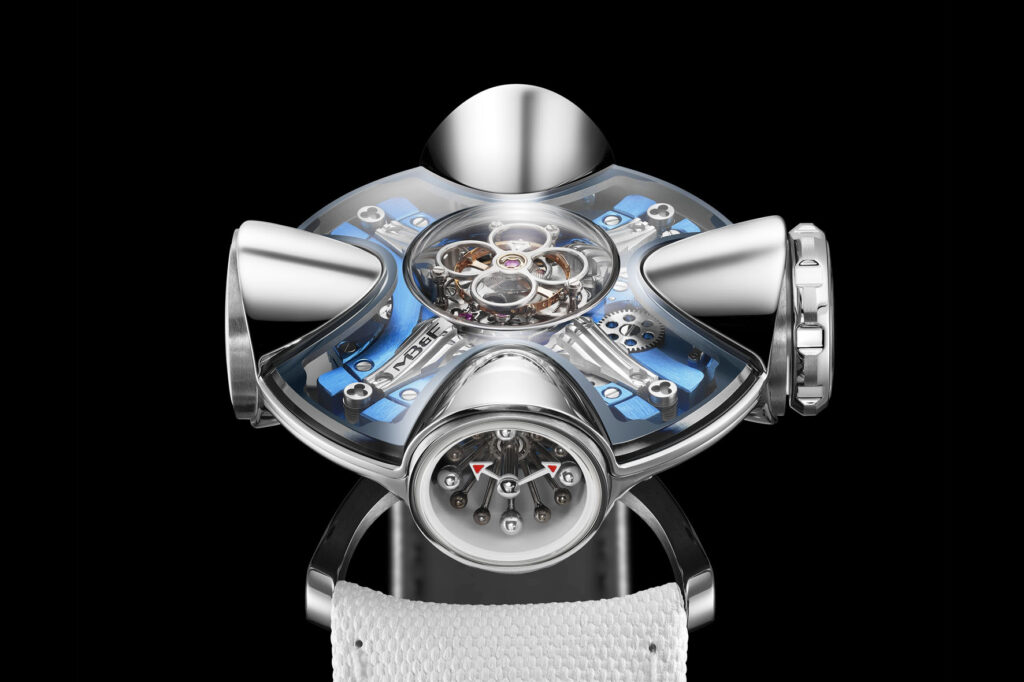
It was humanist in the sense that it moulded space around the form of a human body, the spherical scope of vision perceived by the human eye, the radial ambit of human limbs moving through the air, the roundness of the breath that inflates our lungs and creates ephemeral vapour halos on car windows in winter.
These architects, some of whom eschewed that title and instead called themselves habitologists, built houses which appeared as if they had been exhaled out of the earth, or as if the land had flexed its fingers and forgotten to curl them fully back up again. They bubbled, they undulated, they arched like an extended sinew. And when Maximilian Büsser, founder of MB&F, looked at one of these houses, he thought, “What if that house was a watch?”
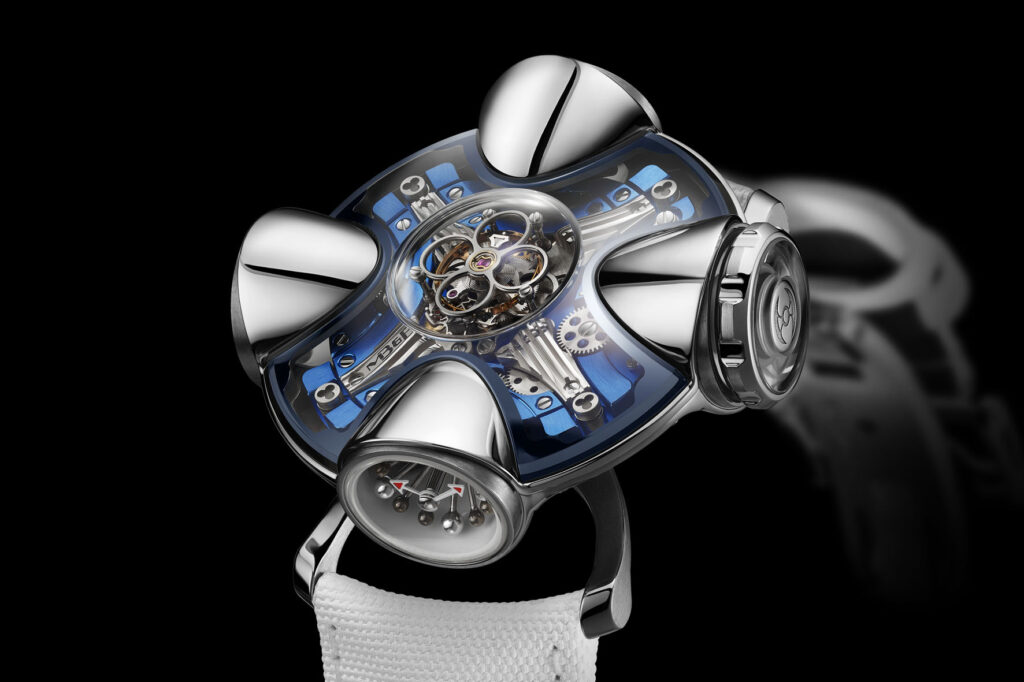
A central flying tourbillon forms the heart of the house, pushing skyward under a double-domed sapphire roof. Fittingly, for a mechanism that is spatially and functionally at the origin point of the watch, its quatrefoil-shaped upper bridge recalls the shape of clerestory windows in some of humanity’s greatest temples to its Creator, or perhaps the shape of a zygote undergoing cell division at the moment of conception. From this spinning core, four symmetrical volumes reach outwards, creating the four parabolic rooms of the house that is HM11 Architect.
Turn the house to access each room; the entire structure rotates on its foundations. The 90° angle of offset between each room means that you can position HM11 with one of its rooms directly facing you, or with one of the corridors of the house running towards you and rooms obliquely to each side. This versatility in display orientation also has a practical use. HM11 Architect is an energy-efficient construction — each 45° clockwise turn is signalled by a tactile click under the fingers, and delivers 72 minutes of power directly to the barrel. After 10 complete rotations, HM11 is at its maximum autonomy of 96 hours.
While all four rooms share a similar interior — glossy white walls with a full sapphire crystal window pane — each of them has a different function. The time room is where you go to retrieve the hours and minutes. Rod-mounted orbs serve as hour markers, using larger and lighter polished aluminium orbs for each quarter and smaller and darker polished titanium orbs for the rest. Red-tipped arrows point to the hours and minutes, providing a rare accent of colour to the otherwise Spartan time room.
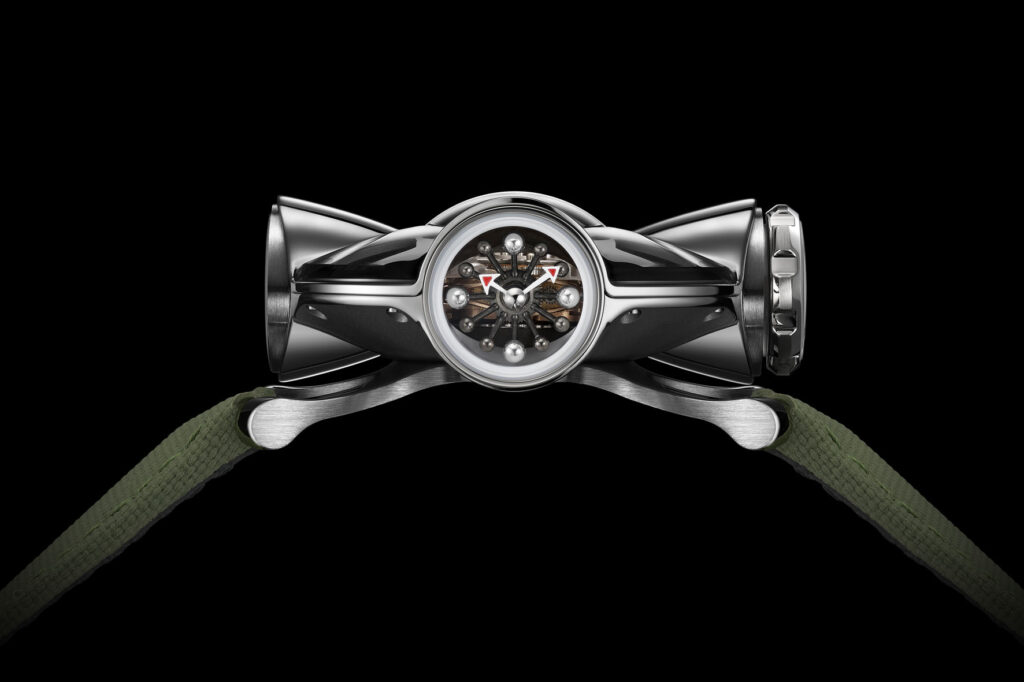
The next room, 90° to the left, is where the power reserve display resides. Following the design schema established by the time room, rod-mounted orbs are paired with a red-tipped arrow to show how much running autonomy is left in the HM11 barrel. Proceeding clockwise, the five orbs increase in diameter until the final polished aluminium orb, 2.4mm in diameter, indicating the full 96 hours of power reserve.
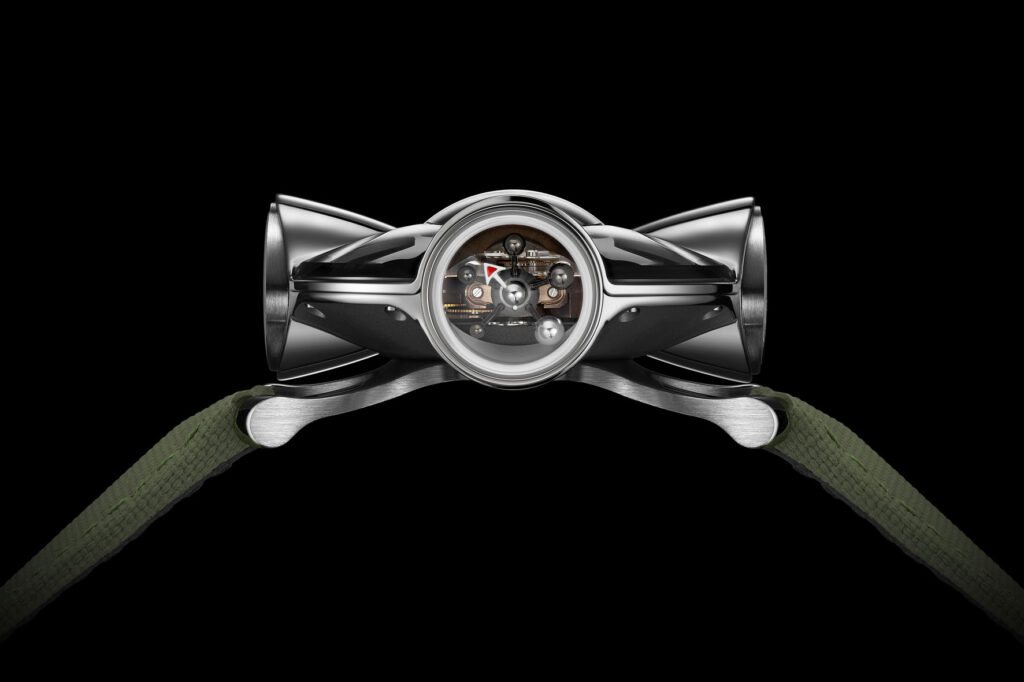
An instrument rarely seen in horological contexts (though familiar in domestic ones) is installed in the next room — a thermometer. HM11 uses a mechanical system of temperature indication with a bimetallic strip, which may seem quaint in this age of instant high-precision electronic thermometers and thermostat-regulated smart homes. This mechanical system functions without any external energy input and is available in Celsius or Fahrenheit display variations.
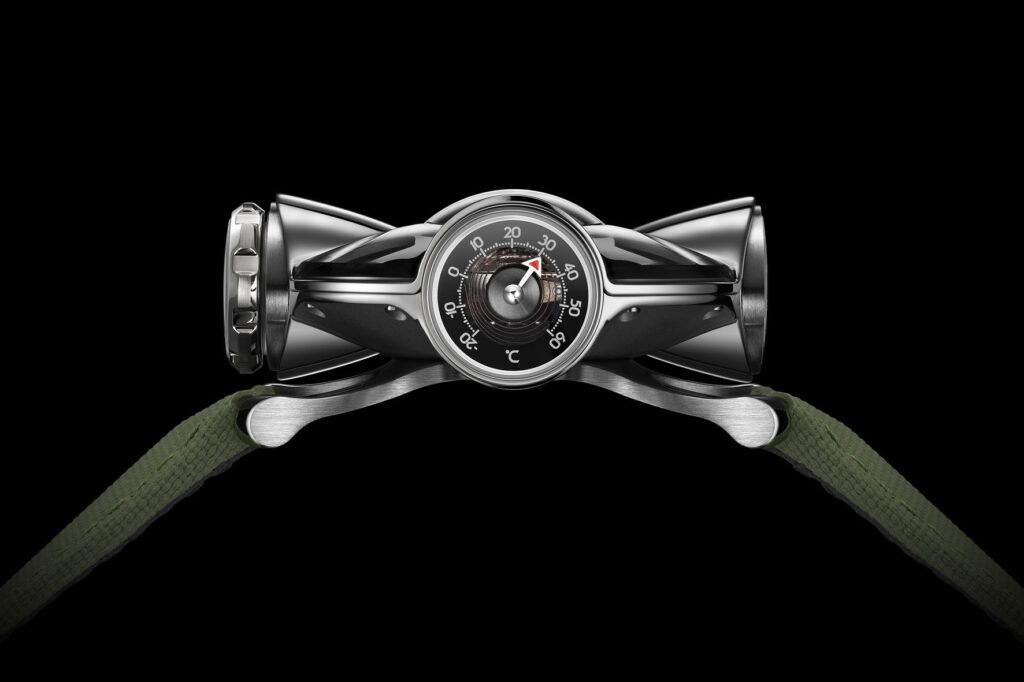
One last room remains, a white void, its only aesthetic feature a tiny round badge engraved with the MB&F battle-axe motif, set into the sapphire-crystal window. But this seemingly empty space functions as the time-setting crown of HM11. Pull on the transparent module, and it opens with a click. It is the front door and key to HM11; you turn it to relocate yourself in time.

While the peripheral rooms of HM11 are surrounded by exterior walls of polished grade-5 titanium, the central atrium is open to the light, covered by a double-arched sapphire crystal roof. Underneath, the in-house HM11 engine hums away, its cadence set by the 2.5Hz (18,000 vph) balance of the flying tourbillon. Plates and bridges are coloured with a physical vapour deposition (PVD) process, coming in ozone blue or the warm solar hues of 5N gold, limited to 25 pieces each for the two launch editions of HM11.
THE HM11 CASE
The materials chosen to represent the two launch editions of HM11 Architect are titanium and sapphire crystal. The lower half of the HM11 case is a highly three-dimensional Grade-5 titanium shell with different inner and outer surface profiles. The upper caps of each of the four HM11 rooms are machined separately, since they can be affixed only after the movement has been installed. Close to a week is required to complete the HM11 case, comprising all the operations of milling, finishing and quality control.
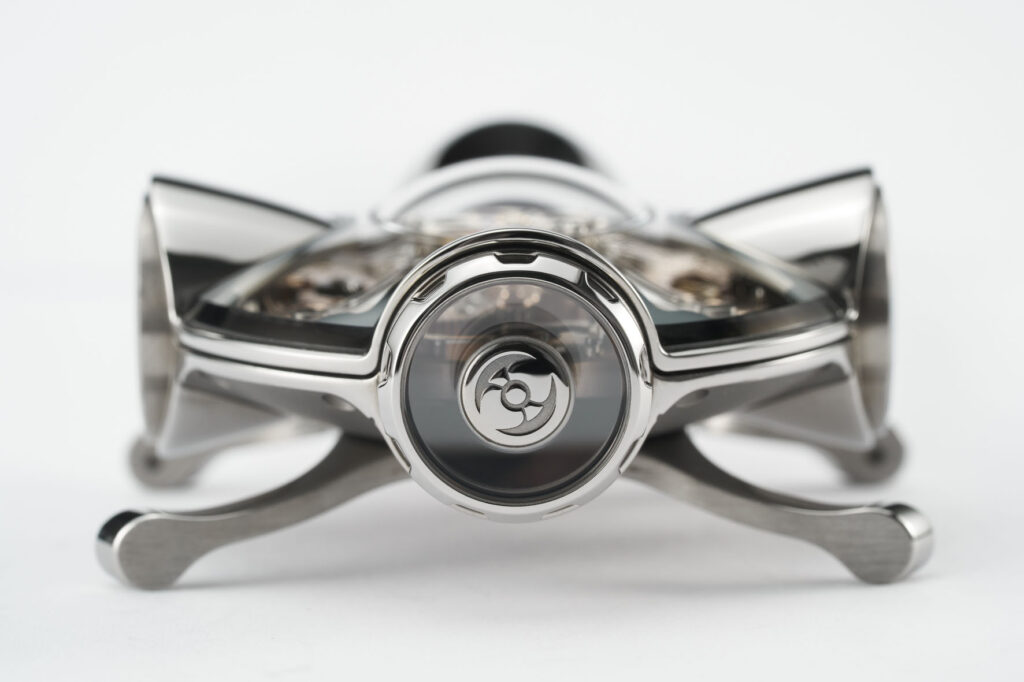
Despite its 3-dimensional, architectural conception and the complexity of its movement, the HM11 case surprisingly measures only 42mm in diameter. It sits sleekly and comfortably on the wrist, thanks to the curved case feet that are also the strap attachment points. These allow the watch to fit a variety of wrist sizes – and also provide stability when the case is turned to wind the barrel.
THE ENGINE
At the literal and conceptual heart of the HM11 Architect engine are two words: power and efficiency.
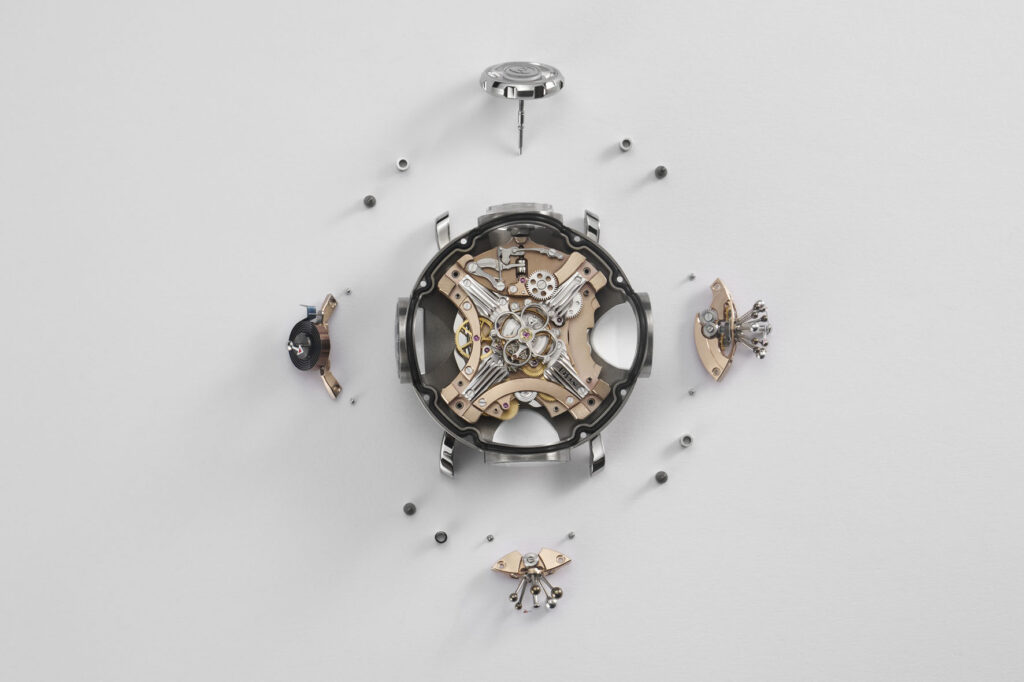
While the barrel forms the repository of all power in any mechanical watch, the ultimate source of this energy is the person whose wrist the watch occupies. The barrel is invested with energy through incidental kinetic action (in conjunction with an automatic winding system) or deliberate manual input (via the winding crown). These two methods of supplying energy are combined in HM11. Winding the watch can be both incidental — a secondary effect of changing the room orientation — and deliberate. The action itself is amplified; instead of turning a crown of small diameter, you turn the watch itself, adding greater weight to the relationship between HM11 and its wearer.
A standard watch with a power reserve of 48 hours requires between 20 and 30 full turns of the crown to be fully wound. With HM11, its 96 hours of power reserve can be completely rewound after just 10 full clockwise rotations of the case.
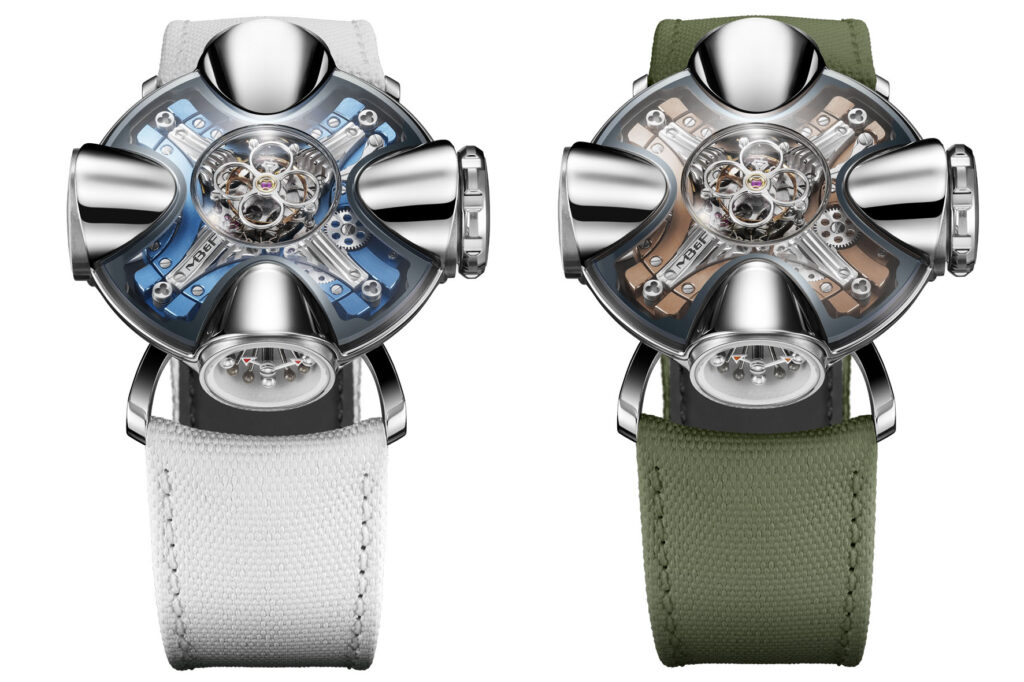
The flying tourbillon that controls the timekeeping ability of HM11 Architect is today a key part of the mechanical identity of MB&F, appearing in Horological Machines 6 and 7, as well as Legacy Machine FlyingT. Its large balance wheel boosts the overall inertia of the system, offering benefits in terms of chronometric stability, but tourbillons (and flying tourbillons in particular) are vulnerable mechanisms, susceptible to shocks that can interfere with performance. Conventional shock-protection solutions in watchmaking are designed to protect specific components, notably wheel pivots, whereas general shock-proofing solutions that shield the entire movement are uncommon. Rather than applying additional shock-proofing elements to individual watch components, HM11 incorporates a full-system dampener, consisting of four high-tension suspension springs that sit between the movement and lower-case shell.
These are not simple coiled springs made from wire, but custom springs laser-cut out of a low-carbon high-hardness steel tube with chrome finish. The specific alloy composition and crystalline structure of this steel provide exceptional resistance to wear, while its finish and cylindrical form impart aesthetic value — despite the fact that the springs are completely hidden from view. Such springs are used nowhere else in modern watchmaking except at MB&F, and are derived from technologies designated primarily for the aerospace industry.




